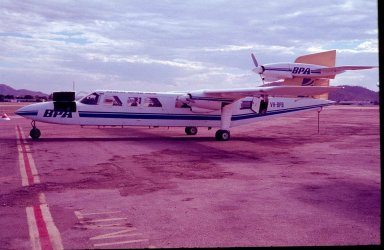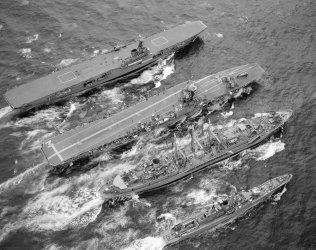Surprised that the forecast had the fog forming that “late” in the morning but it certainly explains the sequence of events (apologies re the incorrect flight number)Ignoring the flight numbers...the fog forecast for Launceston had it appearing around 8am, and then hanging around for much of the day.
You are using an out of date browser. It may not display this or other websites correctly.
You should upgrade or use an alternative browser.
You should upgrade or use an alternative browser.
Ask The Pilot
- Thread starter NM
- Start date
- Featured
Last Friday (21st July) I was on a 737 QF 541 from Brisbane to Sydney and we only got to 24 thousand feet. The plane's previous flight was at 37k and the next flight was at about 28k. Would there be a reason or were just luck that ATC wanted us to get such such a close up view of the clouds as the sun set?
jb747
Enthusiast
- Joined
- Mar 9, 2010
- Posts
- 13,443
VH-VXR. The previous flight was Sydney to Brisbane, and it went high. Then reversing that flight back to Sydney (your flight), it went relatively low. So straight away the answer will be related to the winds. Northbound high, south low is a pretty common way to treat the monorail (which is what Brisbane-Sydney-Melbourne was called). 28k out of Sydney to Melbourne is still relatively low. The bottom of the controlled airspace was FL200, and I've done flights down at that sort of level to avoid some of the stronger winds.Last Friday (21st July) I was on a 737 QF 541 from Brisbane to Sydney and we only got to 24 thousand feet. The plane's previous flight was at 37k and the next flight was at about 28k. Would there be a reason or were just luck that ATC wanted us to get such such a close up view of the clouds as the sun set?
Yes, pretty much because of winds.
On Friday, the jetstream cut through Armidale/Coffs Harbour bringing 155-165kt winds from WSW for FL300 upwards. This translates to a 90+kt headwind on something like BNE-SYD at those levels. By comparison, the FL240 winds were much weaker at 250/47.
On Friday, the jetstream cut through Armidale/Coffs Harbour bringing 155-165kt winds from WSW for FL300 upwards. This translates to a 90+kt headwind on something like BNE-SYD at those levels. By comparison, the FL240 winds were much weaker at 250/47.
- Joined
- Oct 13, 2013
- Posts
- 16,985
Hi JB . There's were 2 articles about the same plane , vh oqi, flying QF1 and 2. For QF 1 I was wondering with the autopilot failure would the captain allocate different roles to normal and would someone be allocated the role to resolve the problem or would the pilots just fly the plane manually.
The plane also went to a lower altitude for separation issues but would the lower altitude make it easer to avoid issues such as stalling?
For QF 2 with the messages about using the full runway is the main aim of the crew to ensure everyone on the ground and in the air understands that the landing would be different to normal?
The link to article is The Aviation Herald
The plane also went to a lower altitude for separation issues but would the lower altitude make it easer to avoid issues such as stalling?
For QF 2 with the messages about using the full runway is the main aim of the crew to ensure everyone on the ground and in the air understands that the landing would be different to normal?
The link to article is The Aviation Herald
- Joined
- Jun 7, 2006
- Posts
- 11,792
- Qantas
- LT Gold
jb747
Enthusiast
- Joined
- Mar 9, 2010
- Posts
- 13,443
You should consider yourself lucky.Never seen this type of aircraft before
jb747
Enthusiast
- Joined
- Mar 9, 2010
- Posts
- 13,443
The autopilots don't just fail. That's a nice catch all phrase, but they've failed as a result of something else. My guess would be that the aircraft was operating under an MEL that allowed something to be u/s, and that subsequently a second similar item has failed. There goes the redundancy, and the likely result if it's anything to do with air data or side slip, AoA or probe heating (and others) would be that the fly by wire system would revert to a lower law. Whilst going all the way to direct is unlikely, reversion to alternate II would take away the autopilots. And what you're left with isn't a nice easy aircraft to fly. You'll have no roll trim at all, and an almost 100% chance that it will not be in trim in roll. Flying it takes all of your concentration, and can only be done in about 15 minute cycles. Normally you can let go of an aircraft when it's being manually flown, but not in this case. It is extremely tiring. It would be all hands on deck, with the pilot flying switching every 10-15 minutes and the others watching him like a hawk. You wouldn't even consider flying around just to dump some fuel.There's were 2 articles about the same plane , vh oqi, flying QF1 and 2. For QF 1 I was wondering with the autopilot failure would the captain allocate different roles to normal and would someone be allocated the role to resolve the problem or would the pilots just fly the plane manually.
I've had a failure like this, and we had to fly for 4 hours before we could land. We were all knackered.
You won't be able to resolve this. Any law change will be latched, and will need the engineers to reset it.
Stalling won't be an issue, but yes, lower is easier.The plane also went to a lower altitude for separation issues but would the lower altitude make it easer to avoid issues such as stalling?
Really it's just ensuring that everyone is on the same page. You don't normally use anywhere near all of the runway, and ATC space following aircraft based on that. This is saying that we're going to be on the runway longer than usual. The mention of reverse thrust relates to London's noise requirements, as you're supposed to use minimum (generally just idle) reverse.For QF 2 with the messages about using the full runway is the main aim of the crew to ensure everyone on the ground and in the air understands that the landing would be different to normal?
Sadly most of the commentary on AvHerald is from people who have little to no idea.
You CANNOT dump below 80 tonnes (roughly) remaining. So, after dumping as much as possible, that leaves you around 50 tonnes over MLW. But, MLW is not a limitation that you cannot break. As long as the aircraft is landed smoothly, it will do no damage whatsover. The MLW limits apply to somewhat arbitrary rates of descent. Airbus were more flexible in regard to this than Boeing.
- Joined
- Jun 7, 2006
- Posts
- 11,792
- Qantas
- LT Gold
You should consider yourself lucky.
I've ridden in one Jersey-Guernsey-Jersey with Aurigny: Aurigny - Wikipedia and survived...
Buzzard
Senior Member
- Joined
- Jan 22, 2013
- Posts
- 6,967
Not sure I'd want to fly on something called a try lander
Britten-Norman Trislander - Wikipedia
en.wikipedia.org
Read our AFF credit card guides and start earning more points now.
AFF Supporters can remove this and all advertisements
- Joined
- Oct 13, 2013
- Posts
- 16,985
OZDUCK
Established Member
- Joined
- Aug 1, 2010
- Posts
- 4,668
Surely HMAS Sydney to the left - port - of HMAS Melbourne.
SYD
Enthusiast
- Joined
- Oct 5, 2009
- Posts
- 13,545
- Qantas
- Platinum
- Virgin
- Silver
- Oneworld
- Emerald
- Star Alliance
- Gold
Correct. HMAS Sydney never had the angled flight deck modification.Surely HMAS Sydney to the left - port - of HMAS Melbourne.
I can’t tell which Destroyer Escort is starboard of HMAS Supply (but it’s not Swan nor Torrens).
- Joined
- Oct 13, 2013
- Posts
- 16,985
Which one was used for the jetsSydney
Melbourne
SYD
Enthusiast
- Joined
- Oct 5, 2009
- Posts
- 13,545
- Qantas
- Platinum
- Virgin
- Silver
- Oneworld
- Emerald
- Star Alliance
- Gold
Melbourne! Sydney didn’t have a catapult or arrestor wires!Which one was used for the jets
jb747
Enthusiast
- Joined
- Mar 9, 2010
- Posts
- 13,443
It had arrestor wires originally, as you can see in this Korean war image.Melbourne! Sydney didn’t have a catapult or arrestor wires!

HMAS SYDNEY IN ACTION OFF KOREA. OCTOBER 1951 TO JANUARY 1952. WITH THE AUSTRALIAN AIRCRAFT CARRIER HMAS SYDNEY IN KOREA.
Mechanics service their aircraft on HMAS SYDNEY's flight deck as the ship steams to the operational area on the east coast of Korea. Fireflies of 817 Squadron are on the left and Sea Furies on the right.
SYD
Enthusiast
- Joined
- Oct 5, 2009
- Posts
- 13,545
- Qantas
- Platinum
- Virgin
- Silver
- Oneworld
- Emerald
- Star Alliance
- Gold
Yeah, but presumably removed during the conversion to sealift / troop carrier in the early ‘60s? Thereafter only operated the odd helo?It had arrestor wires originally, as you can see in this Korean war image.

HMAS SYDNEY IN ACTION OFF KOREA. OCTOBER 1951 TO JANUARY 1952. WITH THE AUSTRALIAN AIRCRAFT CARRIER HMAS SYDNEY IN KOREA.
Mechanics service their aircraft on HMAS SYDNEY's flight deck as the ship steams to the operational area on the east coast of Korea. Fireflies of 817 Squadron are on the left and Sea Furies on the right.www.iwm.org.uk
luckypierre
Member
- Joined
- Feb 20, 2009
- Posts
- 387
- Qantas
- Qantas Club
- Virgin
- Platinum
Well we did fly on one some years ago from Dinard airport (Brittany) to Guernsey, operated by Air Aurigny. Interesting experience flying relatively low, we were sitting two rows behind the pilot, who spent some of his time reading the newspaper!Not sure I'd want to fly on something called a try lander
Become an AFF member!
Join Australian Frequent Flyer (AFF) for free and unlock insider tips, exclusive deals, and global meetups with 65,000+ frequent flyers.AFF members can also access our Frequent Flyer Training courses, and upgrade to Fast-track your way to expert traveller status and unlock even more exclusive discounts!

AFF forum abbreviations
Wondering about Y, J or any of the other abbreviations used on our forum?Check out our guide to common AFF acronyms & abbreviations.
Currently Active Users
- TeaKozy
- arrow
- Mqrko
- Lat34
- pbl22
- luxury-lizard
- Pete98765432
- PLANT
- kpc
- melbourne rebel
- Beachy55
- Dantas
- sidereal
- cjd600
- texter
- Rich
- kevviek
- NavyMRH90
- ShelleyB
- ellen10
- NoName
- HonourableMister
- SomeRando
- Hawk529
- jrfsp
- Jeff12
- markis10
- DrJ
- pjm99au
- WrenchHammerMcTool
- I love to travel
- edgecrusher
- albyd
- Timratoo
- jase05
- Saab34
- moa999
- StayGoldPonyboy
- Stay No Stay
- Want2flymore
- redbigot
- Kristian
- meljfk
- Pele
- dizz
- RooFlyer
- *A Flyer
- Flyfrequently
- MELso
- downgraded
Total: 1,157 (members: 56, guests: 1,101)


















